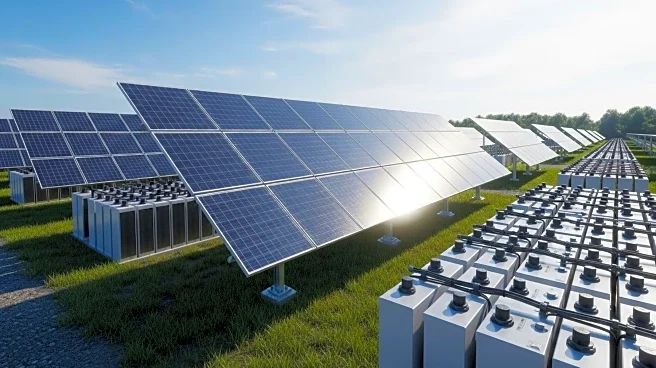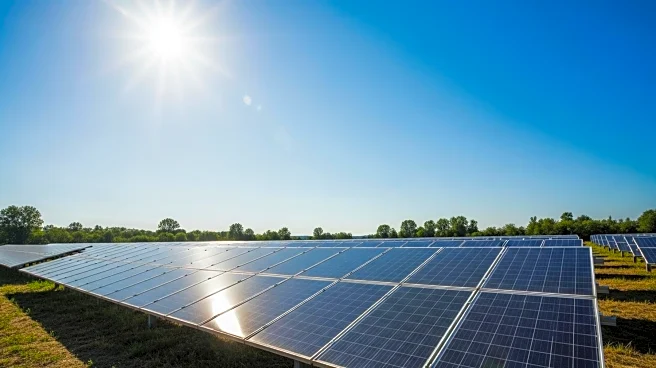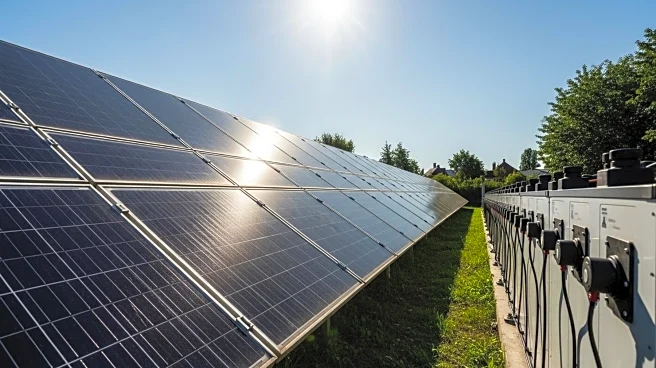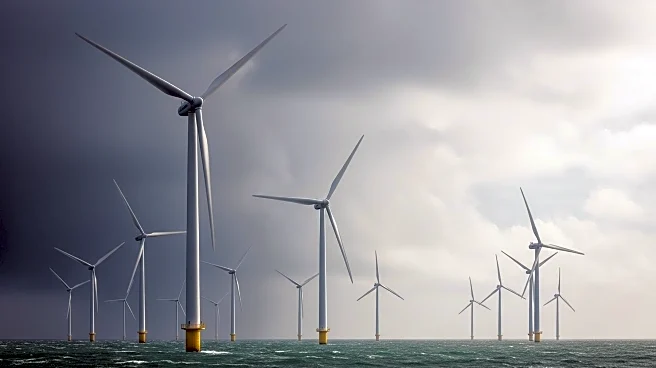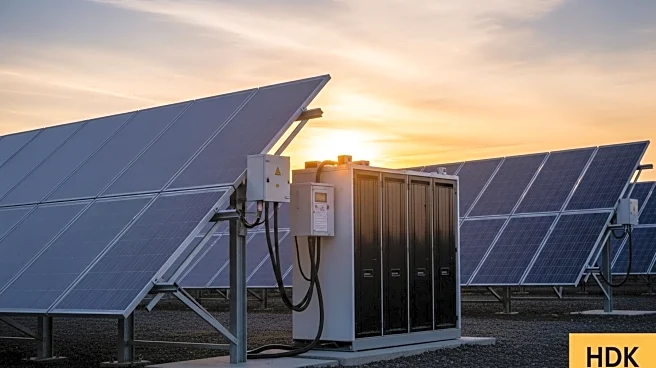What's Happening?
Georgia Power has unveiled its 2025 Integrated Resource Plan (IRP), marking a significant shift in its energy strategy towards renewable resources. The plan, approved by the Georgia Public Service Commission, sets ambitious targets to procure 4,000 megawatts (MW) of renewable energy and 1,500 MW of battery storage by 2035. This strategic move is designed to enhance grid reliability and support decarbonization efforts. The utility's roadmap includes a phased approach to expanding its clean energy portfolio, with a focus on solar, wind, and biomass. Additionally, Georgia Power is advancing solar-plus-storage projects in Laurens and Mitchell counties, with a combined capacity of 350 MW. The company is also seeking certification for over 3,000 MW of battery energy storage systems across multiple sites.
Why It's Important?
Georgia Power's renewable energy expansion is crucial for several reasons. It aligns with the broader industry trend towards decarbonization and positions the company as a leader in the Southeast's renewable energy transition. The plan is supported by regulatory incentives, such as those from the Inflation Reduction Act, which provide financial viability for the transition to renewables. This strategic pivot not only addresses the growing demand for clean energy, particularly from data centers in the Atlanta region, but also ensures grid resilience and reliability. For investors, Georgia Power's focus on renewable energy offers a compelling case for sustained growth, backed by a robust environmental, social, and governance (ESG) framework.
What's Next?
Georgia Power's next steps involve the continued development and implementation of its renewable projects, including the construction of new transmission lines to support the increased capacity. The company will also focus on competitive procurements to ensure cost-effective resource planning. As the Southeast region continues to see investment in solar and wind energy, Georgia Power's early-mover advantage in storage and grid modernization could lead to long-term benefits, including margin protection and customer retention. The utility's commitment to achieving net-zero emissions by 2050 further underscores its dedication to sustainable energy practices.
